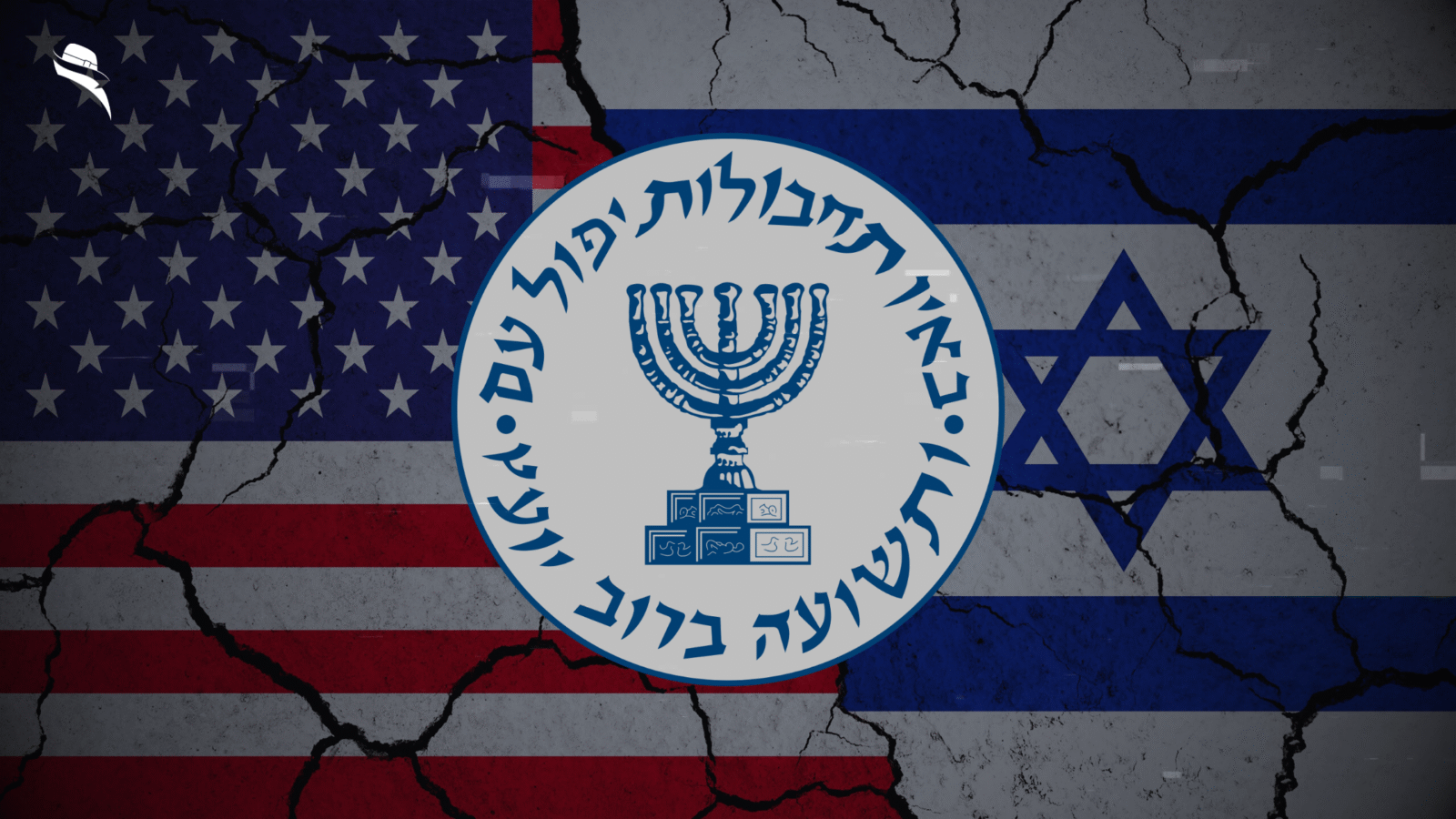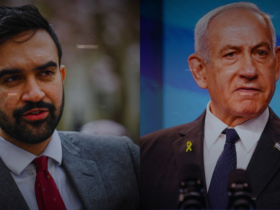Israeli espionage ranks among the most active on American soil, alongside larger countries such as China and Russia. Despite being considered a close ally, Israel conducts the most aggressive espionage operations against the United States of any ally, according to a 1996 GAO report.
In fact, when the CIA finally exposed Israel publicly in 1996 for being “extensively engaged in espionage,” it confirmed what many counterintelligence officials already knew. The scope of activities of Mossad in America extends beyond occasional intelligence gathering. When the notorious Jonathan Pollard case broke in 1985, many assumed it was an isolated incident. However, Israeli intelligence was actually the second most active foreign intelligence service in the United States, second only to the Soviets.
This article examines the complex relationship between Mossad and America, exploring how Israeli intelligence operates within U.S. borders and why it continues to do so with relative impunity. From the damaging Pollard case, where approximately 800 highly classified documents were passed to Israel, to the ongoing tensions between Mossad and CIA operations, we’ll investigate the paradox of partnership between these intelligence agencies. Furthermore, we’ll address the persistent question of whether Mossad agents remain active in America today and how this affects bilateral relations between the two countries.
The Early Roots and Activity of Mossad in America
Long before the formal establishment of Mossad in 1949, Israeli intelligence operations were already taking root on American soil. These early activities laid the groundwork for what would become one of the most sophisticated foreign intelligence networks operating in the United States.
Zionist networks before Israel’s founding
The Zionist Organization of America (ZOA), founded in 1897 as the Federation of American Zionists, served as one of the earliest formal networks supporting Jewish statehood. Initially, this organization operated openly as a political advocacy group. By 1939, ZOA membership had peaked at 165,000, creating a substantial base for pro-Israel activities. In 1949, the Federal Bureau of Investigation investigated ZOA under the Foreign Agents Registration Act after the organization worked to accelerate technology transfers to Jews in Palestine. On February 25, 1948, the ZOA was initially ordered to register as a foreign agent but eventually avoided this designation after constitutional changes.
Smuggling arms and intelligence in the 1940s
Prior to Israel’s creation in 1948, a Zionist underground existed in America specifically for smuggling war materials to Palestine, violating the Truman administration’s embargo. This covert network was supervised by a four-member board consisting of an American citizen, two Israeli diplomats, and an Israeli coordinator who traveled between countries. Following Ben-Gurion’s plea, nineteen American Jews began a complex global operation to smuggle weapons to the Haganah. The FBI learned of at least twelve incidents where American citizens passed classified information to Israelis, yet no prosecutions followed. Additionally, in late 1946, the Haganah established a clandestine mission in the USA directed by the “Sonneborn Institute” – a group of Jewish millionaires assembled by Ben-Gurion in July 1945.
The Lavon Affair and early diplomatic tensions
The Lavon Affair marked a significant escalation in early intelligence operations. In 1954, Israeli defense minister Pinhas Lavon organized a plan using Egyptian Jews and undercover Israeli agents to bomb American, British, and Egyptian buildings in Cairo. The operation aimed to blame Arabs and create an anti-Western atmosphere, convincing British and American authorities to maintain their presence in the Suez Canal zone. This failed covert operation triggered profound regional consequences, including a retaliatory military incursion by Israel into Gaza that killed 39 Egyptians. The affair intensified tensions between Israel and Egypt, increased Palestinian infiltration from Gaza, and damaged US-Israeli relations.
From Nuclear Secrets to High-Tech Theft: 1960s–1980s
Israel’s scientific and technical espionage escalated dramatically during the Cold War era, with operations targeting America’s most sensitive technologies and secrets.
The NUMEC uranium case
The mysterious disappearance of over 200 pounds of weapons-grade uranium from Nuclear Materials and Equipment Corporation (NUMEC) in Pennsylvania between 1957-1978 remains a contentious chapter in U.S.-Israeli relations. Despite NUMEC president Zalman Shapiro’s close Israeli ties, no conclusive proof of theft emerged. Nevertheless, John Hadden, CIA’s Tel Aviv station chief, declared NUMEC was “an Israeli operation from the beginning” after agency tests matched uranium samples outside Israel’s Dimona facility to the missing American material.
LAKAM and the rise of scientific espionage
In 1960, Israel established the Bureau of Scientific Relations (LAKAM), an intelligence unit specifically designed to collect scientific intelligence abroad. Under the leadership of Benjamin Blumberg (1957-1981) and later Rafi Eitan (1981-1986), LAKAM methodically acquired nuclear technology through both open sources and clandestine operations. CIA reports confirmed Israel gave “top priority” to collecting U.S. scientific intelligence.
Jonathan Pollard and the most damaging leak
Naval intelligence analyst Jonathan Pollard delivered approximately 800 classified documents to Israel between 1984-1985. His biweekly document drops contained information on Syrian air defenses, Iraqi chemical warfare capabilities, PLO headquarters locations, and Soviet arms shipments. Defense Secretary Caspar Weinberger stated it was “difficult to conceive of greater harm to national security”.
The PROMIS software scandal
LAKAM operatives, notably Rafi Eitan (using the alias “Dr. Ben Orr”), acquired the sophisticated PROMIS case management software. Israeli engineers reportedly inserted backdoors into this software, allowing monitoring of any organization using it. Through businessman Robert Maxwell, Israel sold modified PROMIS globally, generating over $500 million by 1989.
Modern-Day Espionage: 1990s to 2020s
Israeli intelligence activities evolved into more sophisticated operations at the turn of the millennium. While the technology and targets changed, the pattern of close monitoring of American interests persisted throughout this period.
The AIPAC affair and political lobbying
The AIPAC espionage scandal of 2004-2005 represented a rare instance where the intersection of lobbying and intelligence gathering became public. Pentagon analyst Lawrence Franklin passed classified U.S. policy documents on Iran to two staffers of the American Israel Public Affairs Committee (AIPAC), who allegedly relayed this information to Israeli diplomats. Although Franklin received a 12-year sentence (subsequently reduced), charges against AIPAC officials Steven Rosen and Keith Weissman were dropped in 2009. Simultaneously, controversy erupted when Rep. Jane Harman was recorded promising an Israeli agent to intervene on behalf of the AIPAC defendants.
The ‘art student’ mystery and 9/11 theories
Consequently, news broke in 2002 about federal agents detaining dozens of young Israelis posing as art students who visited secure government buildings under suspicious circumstances. Five Israelis were arrested on September 11th after apparently reacting joyfully to the attacks, becoming known as the “dancing Israelis”. After a two-month investigation, the FBI concluded they had no prior knowledge of the attacks.
StingRay devices near the White House
Moreover, in 2019, sophisticated surveillance devices called StingRays were discovered near the White House. U.S. intelligence determined Israel was likely responsible for planting these cell-tower mimicking devices capable of intercepting calls and texts. Despite this serious breach, the Trump administration chose not to publicly rebuke Israel.
Spying on Iran’s nuclear talks
Additionally, in 2015, U.S. counterintelligence detected Israel eavesdropping on confidential Iran nuclear negotiations. Officials were particularly troubled by Israel’s subsequent use of the stolen information to feed U.S. lawmakers selective intelligence in an effort to undermine the emerging agreement.
The Paradox of Partnership: Mossad vs CIA and U.S. Tolerance
The relationship between Mossad and CIA exhibits a unique contradiction: they maintain close cooperation yet consistently spy on each other, creating a paradox that defines their partnership.
Are there Mossad agents in America?
Undoubtedly, Israeli intelligence maintains an active presence in the United States. Counterintelligence officials describe Israeli operations as “unrivaled and unseemly,” going beyond activities of other allies. At the extreme, Israeli operatives have even conducted “false flag” operations, posing as CIA officers to recruit assets.
Why the U.S. rarely prosecutes Israeli spies
Essentially, three factors limit prosecution: diplomatic concerns, intelligence value, and political pressure. Former intelligence officials reveal that when caught “red-handed,” Israelis simply shrug and say, “Okay, now, anything else?”. The FBI often summons Israeli diplomats for scolding rather than prosecution. As Secretary Albright stated: “You don’t use levers with friends”.
How intelligence cooperation continues despite breaches
Indeed, a formal 1951 agreement between CIA and Mossad pledged mutual non-espionage, yet both sides occasionally violate this understanding. Still, cooperation remains intense – especially regarding terrorism and Soviet activities. As Jerusalem Post correspondent Wolf Blitzer noted, cooperation is “so close that the two organizations do not really have to spy on each other”.
The role of political influence and lobbying
Concurrently, the powerful “Israeli lobby” network in Congress shields Israel from consequences. Pro-Israel groups like AIPAC continue shaping U.S. defense policy, with 96% of AIPAC-backed candidates winning recent elections.
Final Thoughts
The complex reality of Mossad in America presents a significant policy challenge as the US-Israel relationship stands at a critical juncture. At its core lies a fundamental tension: while the United States has provided Israel with over $130 billion in bilateral assistance since 1948, Israel continues conducting intelligence operations against its primary benefactor.
From historical evidence to present operations, the question of whether there are Mossad agents in America has been consistently answered affirmatively throughout decades of counterintelligence work. The repercussions extend beyond security concerns into broader diplomatic relations.
As of 2025, the relationship faces unprecedented strains. Certain experts believe the political consensus surrounding US support for Israel has fractured, yet others emphasize America’s “ironclad strategic partnership” with Israel. This dichotomy illustrates why Mossad vs CIA relations remain both cooperative and adversarial.
Upon closer examination, elite Israeli attitudes toward intelligence gathering reveal a troubling pattern – what Ehud Sprinzak calls an “elite illegalism” that assumes “democracy can work without strict adherence to law”. Certainly, other allies conduct espionage in the United States, yet few receive $3.3 billion annually in military financing.
Looking ahead, some analysts advocate transforming the relationship into a “true strategic partnership” by 2028, whereas others predict increasingly “turbulent” US-Israeli relations. Whichever direction prevails, Mossad in the United States will remain a sensitive barometer of this evolving alliance.







Leave a Reply